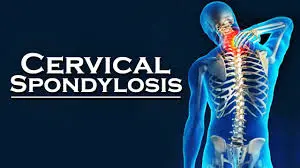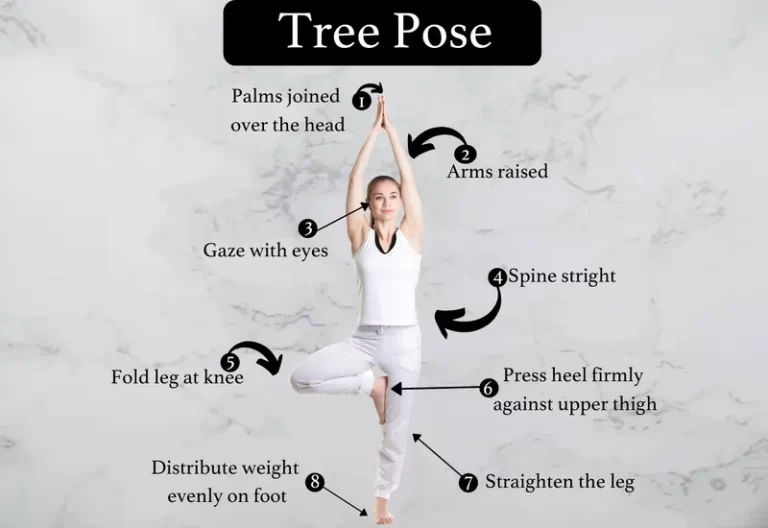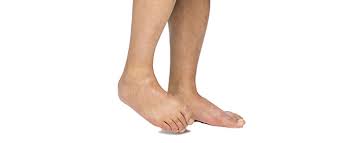Exercise for Cervical spondylosis
Exercise is an important part of Physiotherapy treatment, where it helps strengthen weak Neck muscles, reduced neck stiffness, and helps in speedy recovery of Cervical spondylosis. Cervical spondylosis is a general term for age-related wear and tear affecting the spinal disks in your neck area. As the disks dehydrate and shrink, signs of osteoarthritis develop in the cervical, including bony projections along the edges of bones (bone spurs).
Cervical spondylosis is very common and worsens age-wise. More than 85% of people older than 60 are affected by cervical spondylosis.
For most people, cervical spondylosis causes no symptoms. When symptoms do occurs, nonsurgical treatments often are effective t is cervical spondylosis
Table of Contents
What is cervical spondylosis?
Cervical spondylosis is a type of degenerative disease that affects patients’ neck area. Normally, soft disks between your vertebral part, and the bones in your spine, provide cushioning effect in the spine. With cervical spondylosis, these disks become compressed in the spine.
When this happens, the cartilage that lines the vertebrae on each side of the discs, where they touch, could wear away. Once this protective cartilage is gone, spurs might develop on your vertebrae where they rub together. Nerves attached to your spinal cord might have less room to pass between the vertebrae on their way out of the spine.
What are the benefits of Exercising with Cervical Spondylosis?
If you doing Regular exercise for Cervical Spondylosis, the following are the Benefits:
- Improve Neck movement by reducing Neck stiffness
- Helps strengthen weak neck muscles
- Improve flexibility of Neck muscles which become tight due to cervical spondylosis
- Relive Neck Pain Naturally by releasing Positive Hormones
- Correct Neck posture
- When your neck muscles are conditioned, they could better support and stabilize their nearby spinal structures (eg, bones and joints).
Exercise for cervical spondylosis
Neck stretch: Keep your body straight.
Push your chin area forward in a way that stretches the throat.
Softly tense the neck muscles.
Hold this for 5 seconds.
Return your head to its center position.
Push your head side back with the chin held high, and hold for 5 seconds.
Carry out 5 repetitions.
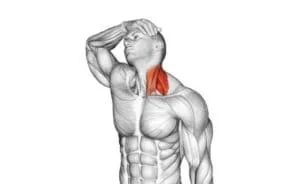
Neck tilt: Tilt your head upward so that the chin touches the chest.
Softly tense the neck muscles.
Hold this for 5 seconds.
Return the head to a neutral position.
Carry out 5 repetitions.
Neck tilt (side-to-side): Lean your head down the side toward either shoulder, leading with the ear.
Softly tense the neck muscles.
Hold this for 5 seconds.
Return your head to the center and repeat on the other shoulder joint.
Carry out 5 repetitions.
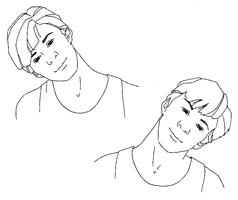
Neck turn: Turn your head to one side as far as it remains comfortable, being sure to keep the patient’s chin at a level height.
Tense your neck muscles for 5 seconds.
Return the head to a central position.
Repeat on the opposite side.
Repeat this exercise 5 times on both sides of the body.
These exercises could help to moderate the impact of the condition and alleviate pain or feelings of stiffness. However, they would not cure cervical spondylosis. exercise for cervical spondylosis
Reclining Neutral Spine Stretch: patient lying on the floor mat with knees bent doing yoga or meditating. To perform this stretching, lie on your back on the floor or another firm surface without any pillow. If the patient cannot lie down without any support, place your head on a folded towel. You might bend your knees. Bring your chin slightly down, toward your throat area, so that only the very back portion of your skull rests upon the floor part. Your ears, shoulders, and hips joints should be aligned, but don’t force your body into these positions if the patient feels any kind of pain. Hold this posture for 5 to 10 minutes. Perform this stretch several times around 3 times a day.

Neck Retraction: Patient lying on floor mat meditating. Ideally, the patient can perform this stretch immediately following the reclining neutral spine stretching, while you are still lying on the floor area. Otherwise, lie down on a flat, firm surface without a pillow or with your head resting on a folded towel. With your hand, gently push down on your chin part so that the back of your neck wants to push toward the floor area. You would feel the muscles at the back of your neck stretching. Hold this stretching for at least 20 seconds, then release it. Repeat the stretch 10 times per session.
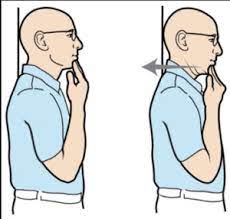
Shoulder Blade Retraction: This stretch just plain feels good to do and makes an excellent, pain-relieving break from sitting at your desk part. While standing with the good posture of the human body—hip, shoulder, and ears aligned vertically; chin slightly tucked—bend your arms 90 degrees at the elbow joint, then squeeze your shoulder blades towards each other and downward side. This would pull your shoulders back too. Hold for at least 10 seconds, or as long as you can while maintaining good posture. Repeat 5 times, twice a day.
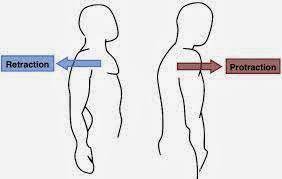
Neck Isometrics exercise: Press your palm against your forehead side. Resist with your neck muscles towards the hand. Hold for 10 seconds. Relax. Repeat 5 times this exercise. Do the exercise in repeat, pressing on the side of your head. Repeat 5 times. Switch sides of the neck. Do the exercise in repeat, pressing on the back of your head. Repeat 5 times.
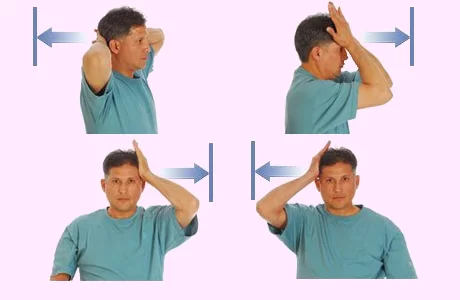
How to prevent cervical spondylosis?
You might not be able to prevent cervical spondylosis, but these steps may reduce your risk:
- Stay physically active.
- Use good posture.
- Prevent neck injuries by always using the right equipment and the right form while exercising or playing sports.
- Avoid trauma to your neck.
When to see a doctor?
If the patient has a sudden onset of numbness or tingling in the shoulder, arms, or legs, or if you lose bowel or bladder control, talk to your doctor and seek medical attention as soon as possible. This is a medical emergency.
If the patient’s pain and discomfort start interfering with your daily activities, you may wish to make an appointment with your doctor. Although the condition is often the result of aging, there are treatments available that could reduce pain and stiffness.
FAQ
Cervical spondylosis is the medical term for neck pain caused by age-related wear and tear to bones and tissues around the area. The more common symptoms of cervical spondylosis are neck pain, stiffness, and headaches. rarely, it could trap nerves in the neck, leading to pain radiating from the arms.
Most people with cervical spondylosis have some prolonged symptoms. These symptoms improve with non-surgical treatment and don’t need surgery. some people with this problem are able to maintain an active life. Some people will have to live with chronic (long-term) pain.
Key points: This study suggests that patients with cervical spondylosis may present anatomical and functional adaptive changes in the brain. Cervical spondylosis might lead to white matter damage, gray matter volume loss, and available adaptive changes in the sensorimotor cortex.
Spondylosis can lead to spinal stenosis, a narrowing of the spinal canal. As a result, the spinal cord and spinal nerve roots can become compressed (pinched). For example, the cervical spinal cord could be affected by compression from spondylosis. This is called cervical spondylotic myelopathy.
C4 radiculopathy due to cervical spondylosis has rarely been reported as a cause of hemidiaphragmatic paralysis.

